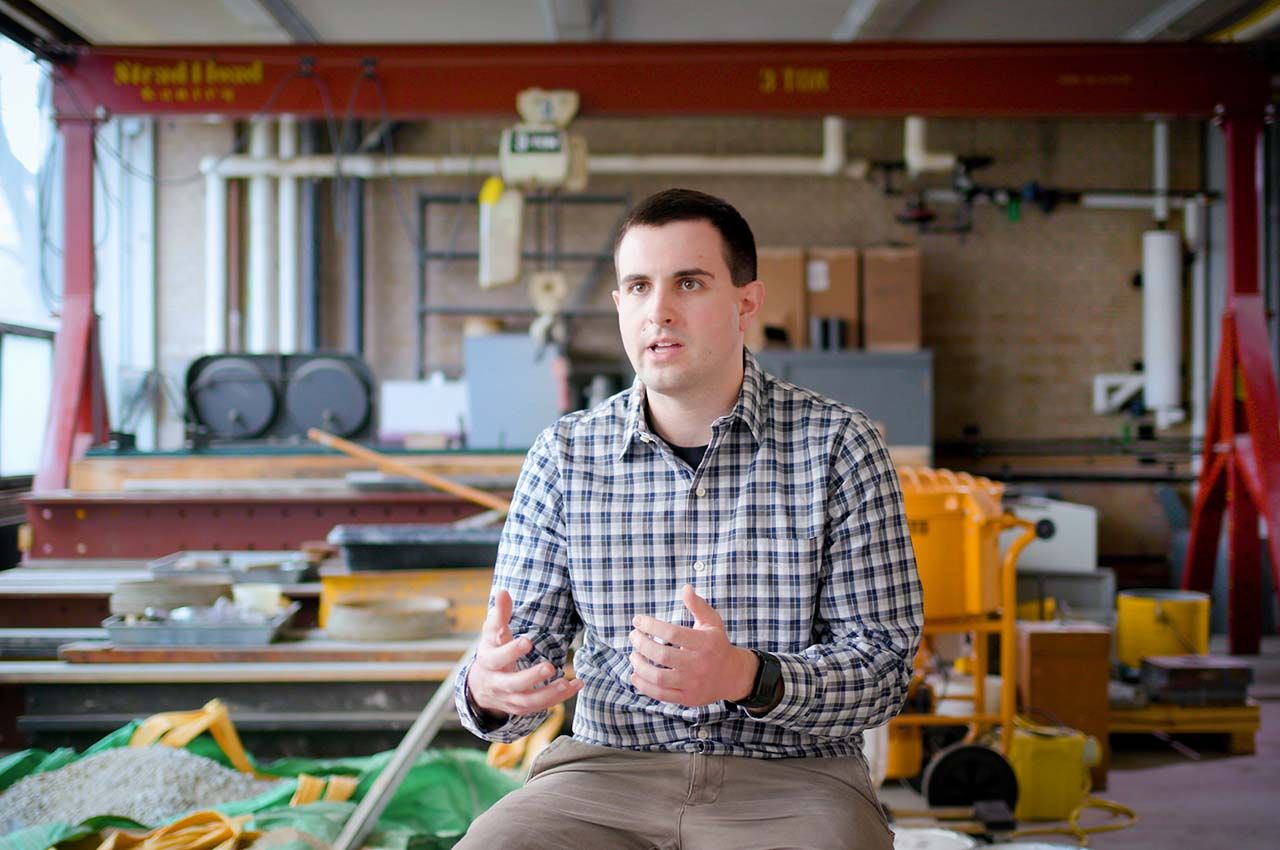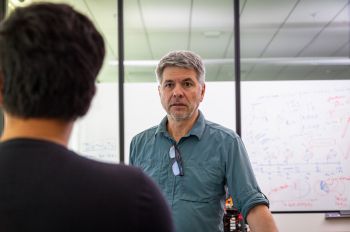Searching for a Sustainable Solution: Using Fly Ash in Concrete Mix Designs

TRANSCRIPT
Assistant Professor of Civil Engineering Matt Gombeda: The research that we’re working on that's sponsored by the U.S. Department of Energy’s Office of Fossil Energy really focuses on incorporating higher volumes of fly ash into precast concrete mix designs that, ultimately, through a series of material testing and structural testing, will hopefully develop new design guidelines and recommendations for more sustainable precast structures.
Fly ash is what we call a supplementary cementitious material. So you can actually use fly ash as a replacement for conventional Portland cement, which is really the sort of main glue for the concrete when it's mixed with water.
And fly ash is a byproduct of coal combustion from power plants, so it’s basically the particles of the flue gas that come out of the furnace, and then that's captured and reused. It’s sustainable. It’s a byproduct of another process, and it can be also used to offset some of the sort of environmental impacts of traditional Portland cement.
So I think it’s important to remember that even though concrete has this sort of notation that it’s really harmful to the environment, it’s still extremely useful for structural design. It’s relatively cheap, it’s reliable if we do the design right, and it really sort of is a fundamental foundation—both literally and figuratively—in buildings of our construction practice.
So hopefully one of the things that comes out of this research is not just enhancing the use of fly ash but really setting up concrete mix design, specifically for precast, to really be sort of next generation for inheriting some of these newer, more innovative, more sustainable materials.
I think the way to the future with concrete is just sort of enhancing it, not, sort of, replacing it.


![[From left to right] Associate Professor of Biomedical Engineering Kenneth Tichauer and Professor of Electrical and Computer Engineering Jovan Brankov](/sites/default/files/styles/width_350/public/2024-11/tichauer-brankov_1280x850.jpg?itok=hxdjBhlU)

